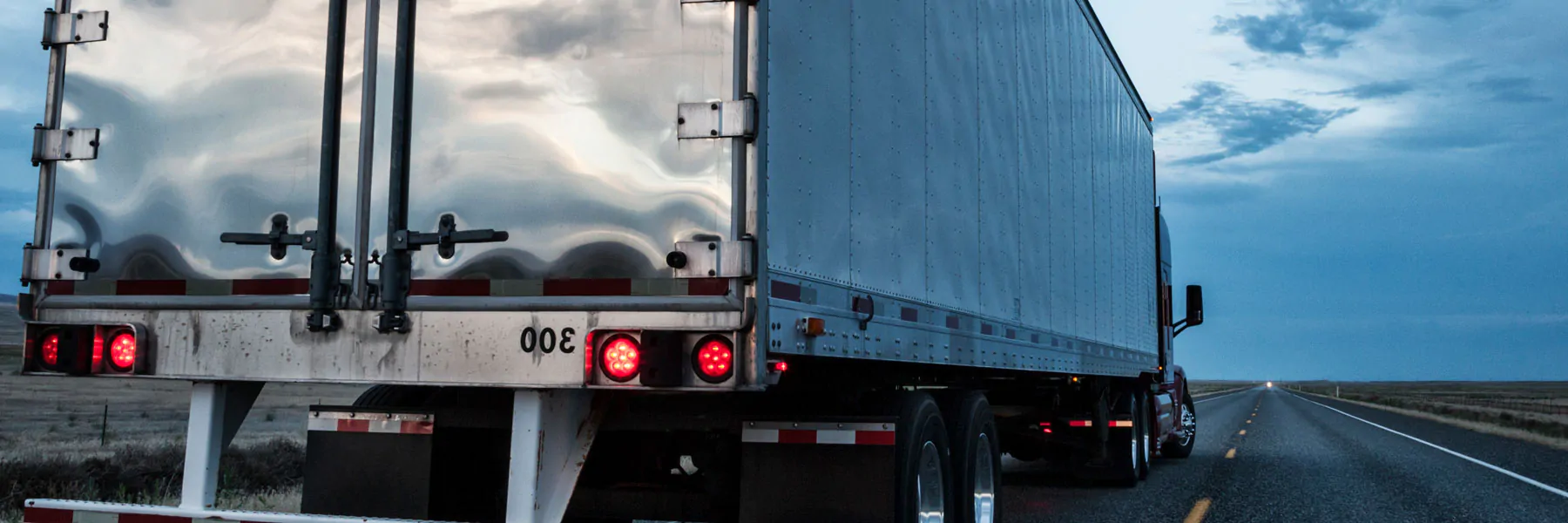

Trailer maintenance calendar: What to do monthly, quarterly and pre-peak
Keeping trailers roadworthy isn’t just about passing inspections, it’s about predictable uptime. This calendar gives your team a simple rhythm of monthly, quarterly, pre-peak and pre-trip tasks that catch the small faults before they become roadside headaches. Adapt the intervals to your mileage and duty cycle, and log everything.
Monthly: quick wins that prevent roadside failures
Focus on fast, high-impact checks that stop the most common defects.
- Tyres and wheels: Check pressures “cold”; inspect for cuts, cords, irregular wear and valve caps; verify wheel-nut indicators are aligned and re-torque where policy requires.
- Lights and electrics: Test all lamps (tail, brake, indicators, markers, number-plate, reverse); check 7-/15-pin plugs and sockets for pin damage, corrosion and water ingress; confirm conspicuity tape is intact.
- Air system: Listen for leaks with the trailer aired up; inspect suzies, gladhands and seals; drain air tanks where fitted with manual drains; check spring brake release/park function.
- Brakes (visual): Look for damaged chambers, clevis pins and slack adjusters; confirm hoses aren’t chafing; check discs/drums and linings you can see without strip-down; note any hot-running hubs after a road test.
- Suspension and chassis: Walk the beam for cracked hangers, worn bushes, loose U-bolts and airbag damage; check ride-height valve linkages.
- Body, floors and doors: Inspect deck for delamination or rot; check curtain tracks, buckles and straps; verify door seals, hinges and locks; ensure load-restraint points/rails are secure and rated.
- Landing legs and ancillaries: Wind legs fully, check gears and feet; inspect number-plate holders, spray suppression, sideguards and underrun bars.
- EBS/ABS basics: Confirm dash lamp behaviour when coupling; check ECU connectors are seated and free of moisture; note any fault lamps or blink codes for investigation.
- Refrigerated units (if applicable): Quick run-test; check belts, filters and visible fuel lines; confirm data logger is recording.
Quarterly: deeper inspection and performance evidence
Once a quarter, add time for measurements, lubrication and performance tests.
- Brake performance: Book a laden roller test or calibrated road test to evidence braking; investigate imbalances and low effort early.
- Detailed brake inspection: Measure lining and disc/drum condition; check automatic slack adjuster operation; verify chamber sizes/markings match spec.
- Hub service: Check end-float/preload to spec; look for grease migration or oil leaks; sample wheel bearing grease/oil where policy requires.
- Air system health: Inspect air tanks for contamination; test pressure protection valves; check air-dryer service status; replace filters/desiccant as scheduled.
- Suspension geometry: Inspect bush wear and torque settings; verify ride height; visually check alignment and consider a full alignment if wear suggests it.
- Electrical integrity: Load-test circuits; inspect harness runs for rub-through; reseal junctions and grommets; apply dielectric grease to vulnerable connectors.
- Chassis and body structure: Look for cracking at high-stress points (kingpin plate, cross-members, curtain-pole mounts); treat corrosion; tighten floor fixings.
- Load-restraint equipment: Proof-check a sample of lashing points and rails; replace frayed straps/edge-protectors; confirm headboard integrity where fitted.
- Documentation: Reconcile defects raised by drivers with workshop fixes; update service history and schedule any follow-ups.

Pre-peak (before winter, summer or big campaigns)
A month before your busiest period or harsh weather, do a focused reliability sweep.
- Environmental prep: For winter, confirm screenwash ratings on fridge trailers, check door seals, lubricate locks, and carry spare gladhands seals. For summer, pay extra attention to hub temperatures, tyre condition and cooling airflow around brake components.
- Consumables and spares: Stock bulbs, fuses, valve cores/caps, gladhands seals, a few air coils, wheel-nut indicators and approved brake hardware kits.
- Telematics and EBS readiness: Ensure trailer trackers, temperature sensors and EBS telematics are reporting; set alerts for brake faults, temperature excursions and tyre pressures (if TPMS-equipped).
- Driver materials: Issue a seasonal walk-around checklist and a photo guide of “pass/fail” examples relevant to your trailer types.
Pre-trip and change-of-trailer checks (driver)
Every time you hook up—or at the start of shift—drivers should make these non-negotiable checks.
- Coupling and lines: Positive fifth-wheel lock and kingpin check; fit suzies without twists; secure electrical plug; do a tug test.
- Lights and markers: Full lamp check with hazards on; verify conspicuity tape is visible.
- Air and brakes: Build air, confirm no warning buzzers or lamps; release park brake briefly to feel trailer roll, then re-apply; listen for leaks.
- Tyres and wheels: Quick visual for flats, damage and missing indicators; spot foreign objects.
- Doors, curtains and load security: Doors latched; curtains tensioned; load blocked/strapped to plan; no loose dunnage.
- Paperwork and defects: Record defects with photos; don’t depart until safety-critical issues are addressed.
Smart tips that keep uptime high
- Standardise parts where possible: The fewer strap types, lamp units and brake hardware variants you run, the faster you can fix faults.
- Colour-code service points: Paint or tag grease nipples, drain cocks and adjusters so techs and drivers hit the right spots.
- Close the loop on driver defects: Route defect reports directly into your workshop system and auto-create work orders.
- Use wheel-off logs: Any wheel removal triggers a re-torque and inspector sign-off after the bedding-in run.
- Photograph before roll-out: A quick set of bay photos (lights on, straps fitted, doors sealed) is gold for training and audit trails.
How to tailor the intervals
Mileage, terrain and load type matter. Construction and tipper work is harsher on suspensions and tyres than trunking; refrigerated trailers have extra kit to service; urban multi-drop means more curb strikes and door cycles. If defect trends show frequent issues between services, shorten the interval for that system rather than everything.